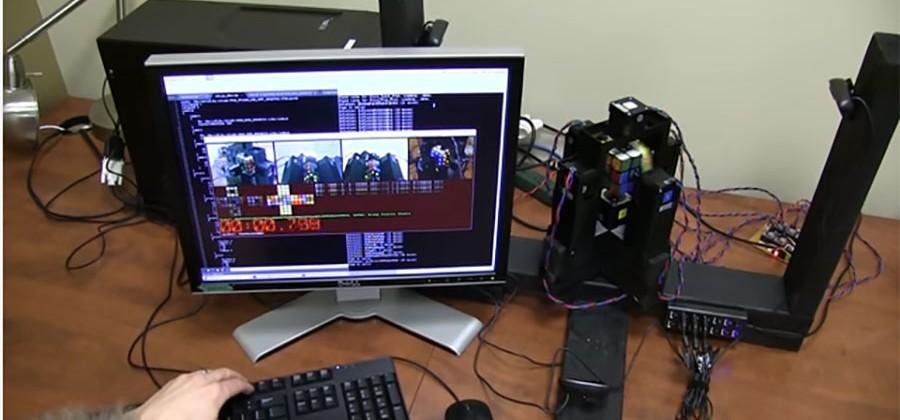It appears that the topic of 3D printing and Rubik’s Cubes has been in the news lots lately. Just a week ago, we covered the Guinness Book of World’s Record-breaking 3D printed Rubik’s Cube. The previous record for the world’s largest 3D printed Rubik’s Cube was 17 x 17, and it was held by the Dutch puzzle maker Oskar van Deventer. Now, “corenpuzzle” has stolen the spotlight from van Deventer with his 22 x 22 3D printed Cube (see photo at right). But no worries. If you are trying to solve other Cube-related activities, you can beat the 14-year-old teen who solved the cube in under six seconds. For 3D printing/Rubik’s Cube related records, consider this most recent one: a 3D printed robot can solved the Cube in under 2
The two men responsible for this amazing and fast puzzle-solving robot are Jay Flatland and Paul Rose, and they have broken a 2014 record that had a robot solving the Cube in 3.253 seconds. This previous record was held by David Gilday and Mike Dobson, and it works by being hooked up to a smartphone:
“This is how the Cube is solved: the entire system is hooked to the smartphone, which in turn comprehends the setting of the Cube’s arrangement. It then ‘instructs’ the four arms how to move, in order to solve the puzzle. Since this is a robot using the Rubik’s Cube, a speed cube is used that allows it to move the sides seamlessly.”
The new record is now 1.196 seconds, and it is held by Flatland and Rose’s custom-made robot featuring a cube-holding frame, stepper motors, and USB-powered cameras that capture, in high resolution, the cube’s form. So, if this robot is even faster than Gilday and Dobson’s, how does it work? With stepper motors controlled by Arduino, a computer functions as the robot’s brains. With a 3D printed frame around the robot and 3D printed feet supporting the motors, the robot holds the cube via holes drilled in affixing the cube to the robot’s arms. An algorithm works out the solution, informed through a Linux app working out the current configuration of the cube, via the cameras.
